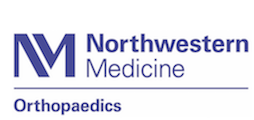|
|

|
« Back
I see from wandering around on the Internet that surgeons are making major improvements in how they do surgery for lumbar spinal stenosis. Since I have this condition and I know I'll eventually need surgery for it, what can you tell me about the latest treatment for this problem?
|
|
Stenosis (SS) is the narrowing of any opening. In the case of the lumbar spine, spinal stenosis refers to a smaller diameter of the spinal canal where the spinal cord or spinal nerve roots are located.
In the aging spine, bone spurs, thickening of the ligaments, and disc degeneration can all contribute to a smaller opening. Any narrowing of this opening for spinal nerves to pass through the bone from the spinal cord on its way down to the leg can result in painful symptoms. Many people with painful lumbar stenosis start to stoop forward.
Bending forward gives a slightly larger space for the neural tissue, taking pressure off the nerves, and reducing back and leg pain. The stooped forward position becomes an unconscious choice of comfort. Treatment is often nonsurgical with antiinflammatory medications, physical therapy, and steroid injections.
When conservative care is unsuccessful in reducing pain, improving posture, or restoring function, then surgery may be the next step. The timeline for successful treatment of spinal stenosis requires quick action -- conservative care for the first three to six months. For best results, surgery is recommended when nonsurgical care is not effective and within a year of the start of their symptoms.
The most common surgical procedure for lumbar spinal stenosis is called a decompression and involves removing bone and soft tissue from around the neural opening (called the foramen). The lamina (the back portion of a protective circle of bone around the spinal cord) is often removed (called a laminectomy).
Surgeons are using minimally invasive techniques for the surgical treatment of stenosis. Some are exploring the use of a new tool called a microblade shaver to get inside the neural canal. This instrument allows the surgeon to carefully remove just the right amount of soft tissue, thereby reducing pressure on the nerve tissue without losing spinal stability.
The shaver has the added advantage of being flexible enough to go forward and back, where the standard tool only allows side-to-side motions. The shaver is inserted into the foramen and pulled back and forth almost like using dental floss.
The end-result is removal of impinging tissue while preserving the lamina and facet (spinal) joint. Saving the facet joint is important because without it, motion of the vertebra is altered. Increased shear and rotational forces develop adding to spinal instability and putting added stress on the disc.
When the microblade shaver system was first developed, a pilot study with nine patients was done. The preliminary results were very positive -- encouraging enough to repeat the study with a larger number of patients. This time there were 67 patients included in the study. Some of the patients had more than one level decompressed so there was a total of 132 levels treated with this shaver system.
Again, the results were very promising with successful decompression of the spinal nerve root that was being pinched. Pain relief and return of function were reported by everyone in the study. All patients remained stable and no one needed any further surgery in the first 12 months after the procedure.
The next step in the investigation of this flexible microblade shaver system is to follow-up the stenosis patients who have already been surgically treated with this tool. Long-term results are needed before declaring the technique an absolute success.
|
References:
|
|
|
« Back
|
|
|
|
*Disclaimer:*The information contained herein is compiled from a variety of sources. It may not be complete or timely. It does not cover all diseases, physical conditions, ailments or treatments. The information should NOT be used in place of visit with your healthcare provider, nor should you disregard the advice of your health care provider because of any information you read in this topic. |
 | All content provided by eORTHOPOD® is a registered trademark of Mosaic Medical Group, L.L.C.. Content is the sole property of Mosaic Medical Group, LLC and used herein by permission. |
|
